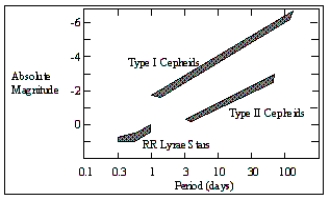A) in the galaxy's globular clusters
B) in the disk of the galaxy
C) in the centre of the galaxy
D) in the galaxy's spiral arms
Correct Answer

verified
Correct Answer
verified
True/False
Population II stars contain more metals than Population I stars.
Correct Answer

verified
Correct Answer
verified
Multiple Choice
According to the traditional hypothesis, how did the galaxy form?
A) from a large cloud of material that broke off a larger galaxy
B) from the collapse of a large spherical cloud of gas that was rotating very slowly
C) from material that had been ejected in the violent explosion of a dying galaxy
D) as a result of mergers between several smaller groups of gas, dust, and stars
Correct Answer

verified
Correct Answer
verified
Multiple Choice
Which component of the Milky Way is associated with higher metal abundance?
A) dark halo
B) disk component
C) halo
D) globular clusters
Correct Answer

verified
Correct Answer
verified
True/False
Harlow Shapley found the distance to the centre of the galaxy by studying the distance to open clusters.
Correct Answer

verified
Correct Answer
verified
Short Answer
Henrietta Leavitt discovered the period-luminosity relationship for _______________ _______________.
Correct Answer

verified
Correct Answer
verified
Multiple Choice
What do radio maps of the spiral arms of our galaxy show?
A) They reveal that our galaxy is a grand design spiral.
B) They map the location of dense neutral hydrogen clouds.
C) They reveal that the Sun is currently located in the centre of a spiral arm.
D) They map the location of hot O and B stars by the radio radiation they emit.
Correct Answer

verified
Correct Answer
verified
True/False
Astronomers refer to all elements that are heavier than hydrogen as metals.
Correct Answer

verified
Correct Answer
verified
Multiple Choice
How did Harlow Shapley use the period-luminosity relationship of RR Lyrae variable stars to determine the size of the Milky Way galaxy?
A) He found the distances to open clusters found throughout the disk of the galaxy.
B) He found the distances to individual variables free-floating in the halo of the galaxy.
C) He determined the proper motion of globular clusters in the outer disk of the galaxy.
D) He found the distances to globular clusters distributed about the centre of the galaxy.
Correct Answer

verified
Correct Answer
verified
Multiple Choice
What kind of orbits did the first stars to form in our galaxy have?
A) circular orbits
B) hyperbolic orbits
C) slightly elliptical orbits, all in the same plane
D) highly elongated elliptical orbits
Correct Answer

verified
Correct Answer
verified
Multiple Choice
Which of the following is now considered to be the most likely dark matter candidate?
A) massive compact halo objects
B) neutrinos
C) weakly interacting massive particles
D) supermassive black holes
Correct Answer

verified
Correct Answer
verified
Multiple Choice
 -Refer to the figure. Why is it more difficult to measure the distances to globular clusters (which contain RR Lyrae stars) than the distances to open clusters (which contain Cepheids) ?
-Refer to the figure. Why is it more difficult to measure the distances to globular clusters (which contain RR Lyrae stars) than the distances to open clusters (which contain Cepheids) ?
A) RR Lyrae stars are dimmer and harder to see.
B) RR Lyrae stars pulsate so fast that they can't be measured.
C) RR Lyrae stars are further away than Cepheids.
D) RR Lyrae stars do not have a relationship between period and luminosity.
Correct Answer

verified
Correct Answer
verified
Multiple Choice
What is the best evidence that Sagittarius A* is a black hole at the centre of the Milky Way galaxy?
A) Orbits of stars indicate a mass several million times that of the Sun within a very small volume.
B) Sagittarius A* is a powerful radio source.
C) No visible light from Sagittarius A* reaches the Earth.
D) Radio maps of the region around Sagittarius A* show complicated gas structures believed to be related to massive star formation.
Correct Answer

verified
Correct Answer
verified
True/False
Population I stars contain more metals than Population II stars.
Correct Answer

verified
Correct Answer
verified
Multiple Choice
Which method did Harlow Shapley use to find the distance to a few of the nearest Cepheid variables?
A) He measured their proper motions across the sky.
B) He used the period-luminosity relation.
C) He measured their parallax.
D) He measured their spectroscopic parallax.
Correct Answer

verified
Correct Answer
verified
Multiple Choice
What is responsible for the pulsation cycle of Cepheid variables?
A) The rotation of the star sends flashing radio beams of light toward Earth.
B) The opacity of stellar material changes depending on the temperature.
C) The combined light of the Cepheid and an orbiting companion changes as they eclipse each other.
D) The power source alternates between fusing hydrogen and fusing helium.
Correct Answer

verified
Correct Answer
verified
Short Answer
When astronomers refer to an element as a metal, they mean its atoms are heavier than atoms of ______.
Correct Answer

verified
Correct Answer
verified
Multiple Choice
You observe a metal-rich star in a nearly circular orbit. Which of the following is most likely to apply to the star?
A) The star is a halo population star.
B) The star is an extreme Population II star.
C) The star is a disk population star.
D) The star is an intermediate Population II star.
Correct Answer

verified
Correct Answer
verified
Short Answer
The locations of O and B stars help us map the positions of __________ ___________.
Correct Answer

verified
Correct Answer
verified
Multiple Choice
Which of the following best describes the current state of the supermassive black hole at the centre of the galaxy?
A) It has a hot accretion disk that emits a large amount of X-rays.
B) It is launching high-energy jets along its poles.
C) It is destroying stars that get too close to the event horizon.
D) It is mostly dormant with occasional flares.
Correct Answer

verified
Correct Answer
verified
Showing 21 - 40 of 84
Related Exams